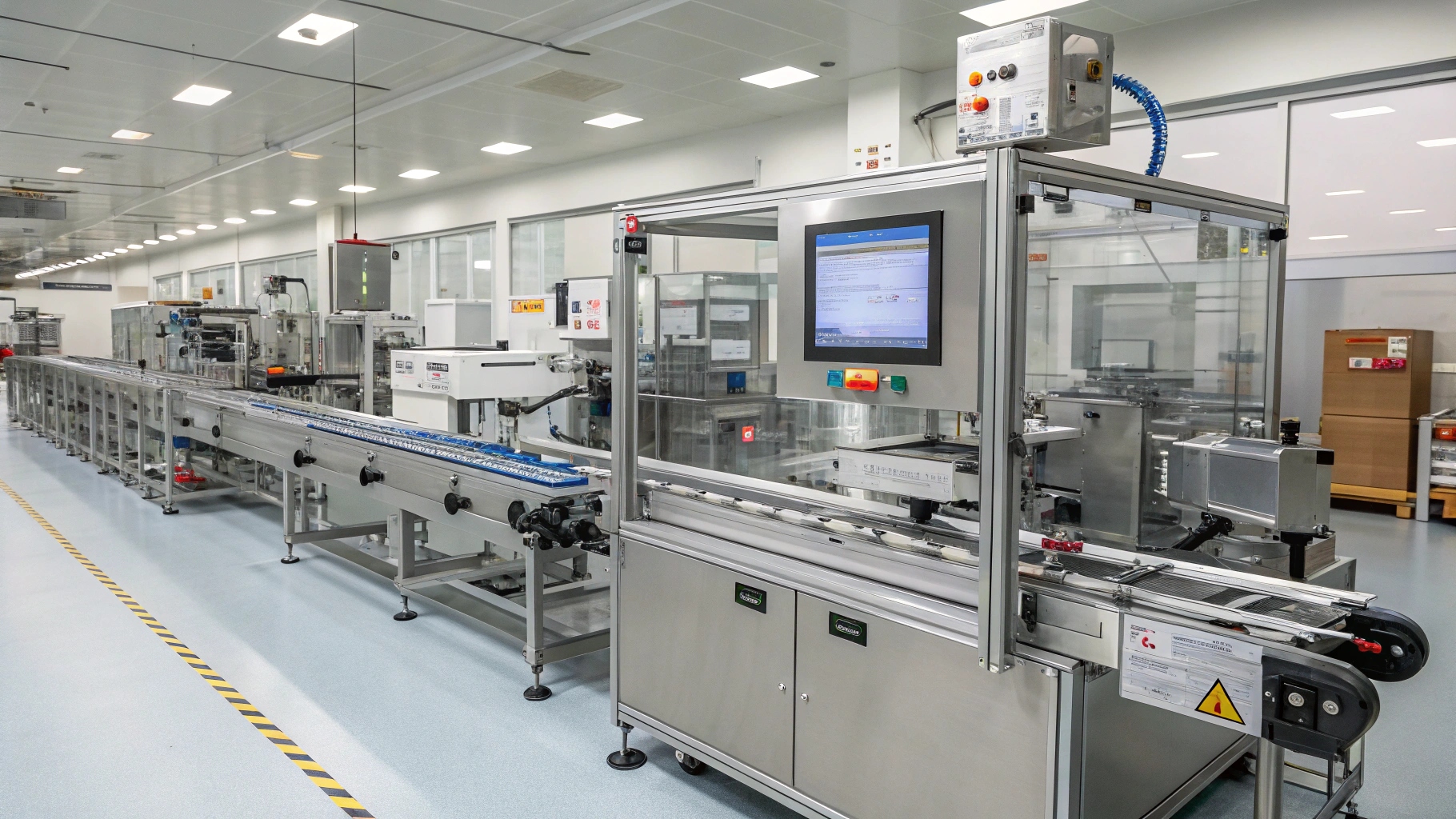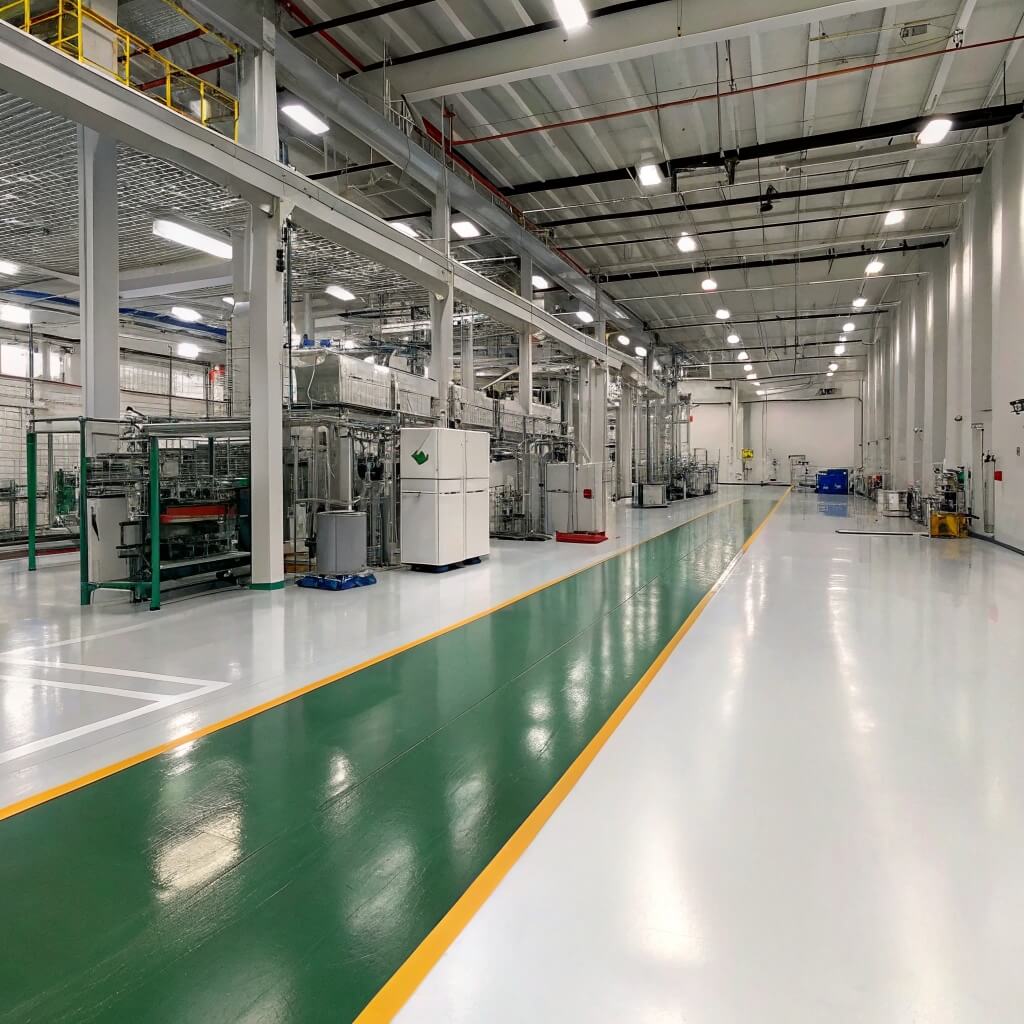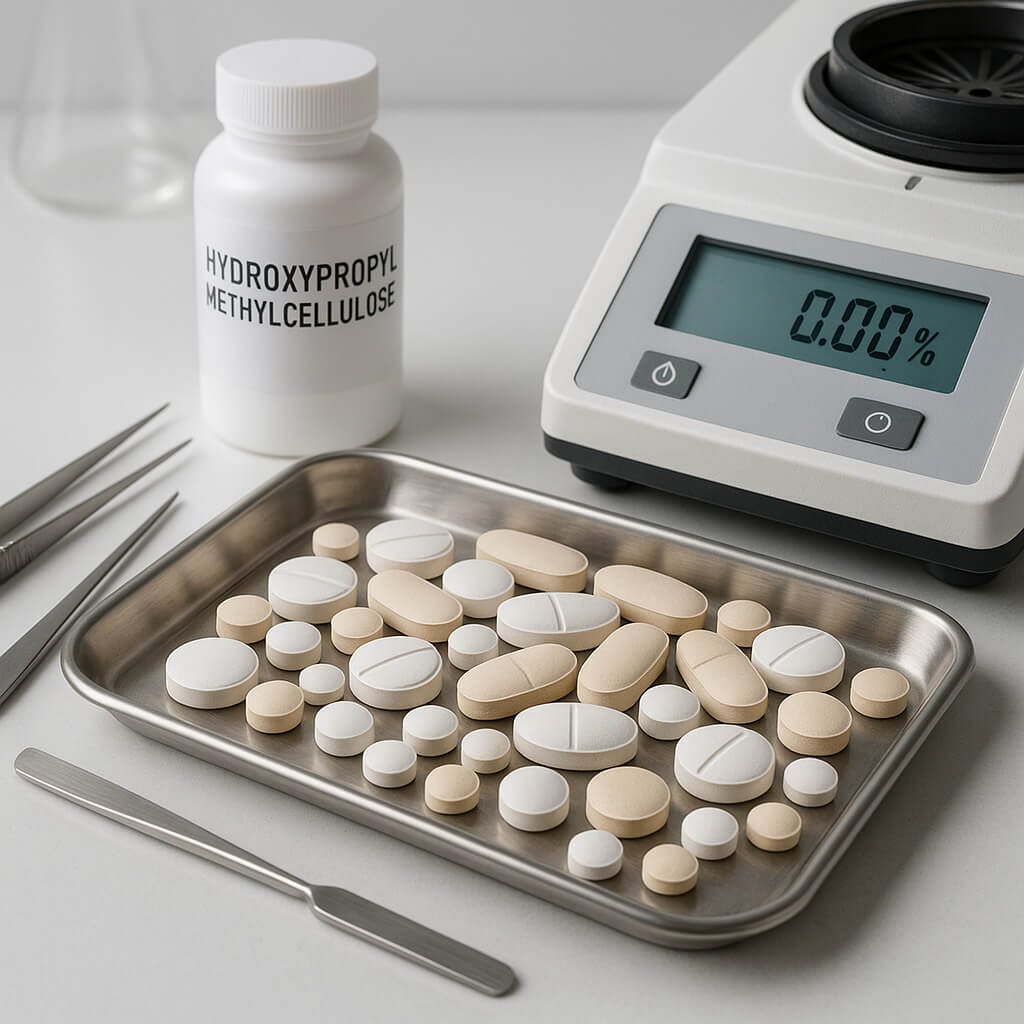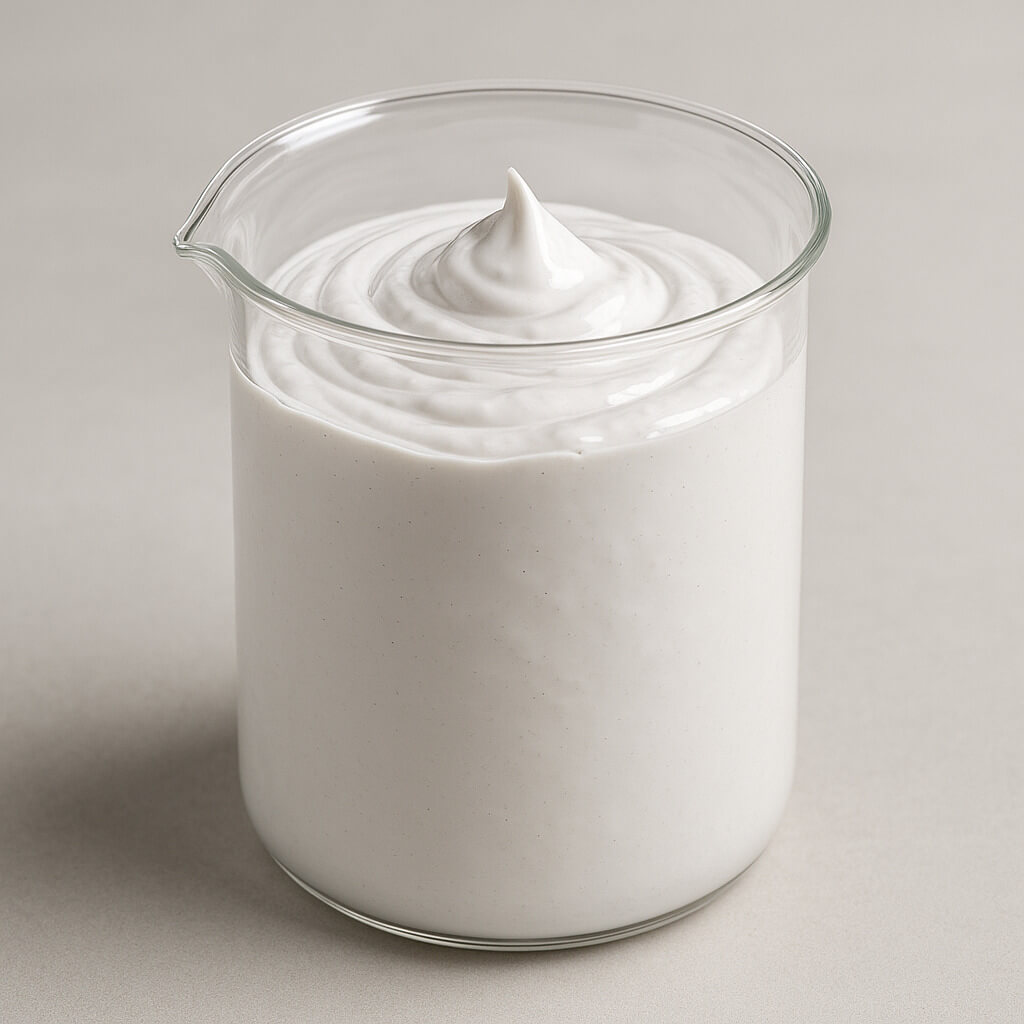Постоянство в производстве гидроксипропилметилцеллюлозы (ГПМЦ) имеет важное значение для таких отраслей, как строительство, фармацевтика и производство продуктов питания. Непостоянное качество может привести к снижению производительности продукта, жалобам клиентов и финансовым потерям. Но как производители поддерживают строгую однородность в каждой партии?
Производители HPMC обеспечивают постоянство продукта посредством строгого контроля сырья, передовых методов производства и тщательного тестирования качества. Ключевые факторы включают точное регулирование вязкости, удаление примесей и соответствие международным стандартам.

Автоматизированное производство HPMC, проводящее проверки качества в режиме реального времени для обеспечения единообразия.
Достижение надежная однородность от партии к партии требует передовых технологий производства и строгого контроля качества. Давайте рассмотрим, почему Постоянство продукции имеет решающее значение, и ведущие производители используют методы, чтобы его достичь.
Почему при производстве ГПМЦ так важна однородность продукции?
Непостоянное качество ГПМЦ может привести к серьезным проблемам с производительностью, отходам материала и производственным сбоям. Используется ли в строительные клеи, фармацевтические таблетки или пищевые стабилизаторы, колебания вязкости, чистоты или растворимости могут отрицательно влиять на функциональность продукта.
Влияние нестабильного качества HPMC
1. Строительная отрасль: проблемы адгезии и обрабатываемости
- Клеи для плитки и растворы на цементной основе требуют точных свойств удержания воды. Изменения вязкости может вызвать неравномерное высыхание, снижение прочности сцепления и плохая обрабатываемость.
- Самовыравнивающиеся смеси и штукатурки требовать постоянная текучесть. Несоответствия в партиях влияют на распределение и качество конечной поверхности.
2. Фармацевтическая промышленность: ошибки в разработке лекарственных средств
- Покрытия для таблеток и препараты с контролируемым высвобождением полагаться на Пленкообразующая способность ГПМЦ. Если вязкость колеблется, покрытия могут стать слишком толстый, ломкий или неэффективный.
- Оболочки капсул требуют определенных скоростей растворения.. Непоследовательные формулировки может изменять профили высвобождения лекарственных средств, влияя на биодоступность и эффективность.
3. Пищевая промышленность: проблемы текстуры и стабильности
- ГПМЦ широко используется в качестве стабилизатор и загуститель в безмолочные напитки, соусы и продукты растительного происхождения.
- Непоследовательный скорости гидратации или размеры частиц может привести к дефекты текстуры, разделение или седиментация.
4. Цепочка поставок и последствия для затрат
- Производители, полагающиеся на HPMC для крупномасштабного производства страдают от дорогостоящие материальные отходы и усилия по переформулированию когда партии не соответствуют требуемым стандартам.
- Нестабильные поставки сырья приводит к задержки в производстве, увеличение процента брака и проблемы с соблюдением нормативных требований.
| Промышленность | Влияние нестабильного качества HPMC |
|---|---|
| Строительство | Плохая обрабатываемость, слабая адгезия, неравномерное высыхание |
| Фармацевтика | Ошибки в формулировке, изменение высвобождения лекарственного средства, плохое качество покрытия |
| Пищевая промышленность | Проблемы с текстурой, разделение фаз, снижение стабильности продукта |
| Цепочка поставок | Материальные отходы, задержка производства, вопросы регулирования |
Почему постоянство определяет репутацию производителя
Вершина Производители ГПМЦ инвестируют в передовые системы контроля качества, точное регулирование вязкости и автоматизированные производственные линии чтобы гарантировать постоянство от партии к партии. Без этих мер предосторожности дефекты продукции, жалобы клиентов и финансовые потери становятся неизбежными.
Чтобы понять, как Производители ГПМЦ поддерживают качество, Давайте рассмотрим ключевые факторы, влияющие на постоянство качества продукции.
Какие ключевые факторы влияют на качество ГПМЦ?
На качество ГПМЦ влияет множество факторов: от выбора сырья до технологий производства и окончательного тестирования. Любое несоответствие в этих областях может привести к различиям в вязкость, растворимость или чистота, влияющие на производительность продукта в строительство, фармацевтика и пищевая промышленность.
1. Чистота и источники сырья
- Высококачественная целлюлоза из натуральных источников (древесная масса или хлопковый линт) обеспечивает лучшее Стабильность и производительность HPMC.
- Примеси в сырье может представить изменения цвета, запаха и непостоянные химические свойства.
- Ведущие производители источник целлюлозы высшего сорта и реализовать строгий отбор материалов.
2. Степень этерификации и замещения
- Степень замещения гидроксипропила и метила определяет Водоудерживающие свойства, температура гелеобразования и вязкость ГПМЦ.
- Различия в уровнях замещения может вызвать несоответствия в образование пленки, эффективность загущения и скорость гидратации.
- Производители должны контролировать условия реакции для обеспечения равномерного распределения замещения.
3. Контроль вязкости и молекулярной массы
- Вязкость ГПМЦ имеет решающее значение для ее функциональности. в таких приложениях, как Изделия на основе цемента, покрытия и фармацевтические препараты.
- Факторы, влияющие на вязкость, включают:
- Время реакции и температура во время производства.
- Распределение молекулярной массы в полимерных цепях.
- Методы сушки и грануляции.
- Передовые производители используют автоматизированные системы контроля вязкости для минимизации отклонений в партии.
4. Содержание влаги и распределение размеров частиц
- Содержание влаги влияет на диспергируемость и скорость растворения ГПМЦ..
- Мелкие частицы растворяются быстрее, но чрезмерная тонкость помола может привести к образованию пыли.
- Контролируемые процессы измельчения и просеивания гарантировать оптимальное распределение размера частиц для различных применений.
5. Производственное оборудование и стабильность процесса
- Устаревшее производственное оборудование может привести к нарушения качества партии.
- Автоматизированные производственные линии улучшать точность процесса, снижение рисков загрязнения и поддержание постоянного качества продукции.
- Мониторинг температуры, pH и времени реакции в режиме реального времени обеспечивает единообразие этапов химической модификации.
| Фактор | Влияние на качество ГПМЦ |
|---|---|
| Чистота сырья | Влияет на цвет, запах и стабильность |
| Степень замещения | Контролирует гелеобразование, удержание воды, вязкость |
| Вязкость и молекулярная масса | Определяет загущающие свойства и производительность |
| Влажность и размер частиц | Влияет на скорость растворения и дисперсность |
| Контроль производственного процесса | Обеспечивает однородное качество и постоянство партии |
Почему эти факторы имеют значение
Поддержание строгого контроля над этими переменными имеет решающее значение для производства высокопроизводительного HPMC. Ведущие производители инвестируйте в системы контроля качества, стандартизированные методы производства и строгий отбор сырья чтобы гарантировать, что каждая партия соответствует мировым стандартам.
Следующий шаг в обеспечении Консистенция HPMC управляет производственный процесс с точностью и эффективностьюДавайте рассмотрим, как ведущие производители добиваются этого.
Как производители ГПМЦ контролируют процесс производства?
Обеспечение Консистенция HPMC[^1] начинается с контролируемого производственного процесса. Изменения температуры, времени реакции и качества сырья могут привести к колебаниям вязкости, чистоты и производительности, что влияет на применение в строительстве, фармацевтике и пищевой промышленности. Чтобы предотвратить это, производители используют точный контроль процесса и автоматизацию для поддержания однородности.
[^1]: Понимание согласованности HPMC имеет решающее значение для обеспечения качества в различных отраслях. Изучите эту ссылку, чтобы узнать больше о ее значимости.
1. Подготовка и очистка сырья
- Высококачественная целлюлоза (из хлопкового линта или древесной массы) предварительно обрабатывается для удаления примесей.
- Химическая очистка устраняет нежелательные компоненты, которые могут вызвать изменение цвета или нестабильность.
- Стандартизированный источник сырья обеспечивает минимальные различия между партиями.
2. Этерификация и химическая модификация
- Целлюлоза подвергается щелочная обработка с последующим этерификация с метилхлоридом и пропиленоксидом.
- Необходимо тщательно контролировать такие условия реакции, как температура, давление и pH. для обеспечения единообразия степень замещения (СЗ), что влияет удержание воды, температура гелеобразования и вязкость.
- Автоматизированные системы мониторинга корректируйте параметры реакции в режиме реального времени для обеспечения однородности партии.
3. Нейтрализация и промывка
- Непрореагировавшие химикаты удаляются. с использованием нескольких циклов стирки.
- Этапы фильтрации и нейтрализации отрегулируйте pH до оптимального уровня.
- Строгие процессы удаления примесей гарантировать высокая чистота и соответствие стандартам USP, EP и JP.
4. Сушка и измельчение
- Очищенный ГПМЦ представляет собой высушенный в контролируемых условиях для достижения цели содержание влаги.
- Прецизионные процессы измельчения и просеивания гарантировать равномерное распределение размера частиц, влияющий Растворимость и эффективность применения.
- Производители используют испытание вязкости в реальном времени во время сушки, чтобы избежать несоответствий.
5. Окончательное тестирование качества и упаковка
- Перед упаковкой, каждая партия проходит тщательное тестирование, включая:
- Анализ вязкости для проверки целевых характеристик.
- Проверка влажности и распределения размеров частиц.
- Тестирование растворения и примесей для обеспечения соблюдения отраслевых норм.
- HPMC тогда упаковано во влагонепроницаемую, незагрязняющую среду для сохранения стабильности при хранении и транспортировке.
| Стадия производства | Меры контроля качества |
|---|---|
| Очистка сырья | Удаляет загрязнения, обеспечивает однородность |
| Процесс этерификации | Контролирует DS, удержание воды, вязкость |
| Нейтрализация и промывка | Обеспечивает чистоту и баланс pH |
| Сушка и измельчение | Поддерживает однородность частиц и уровень влажности |
| Окончательное тестирование и упаковка | Подтверждает соответствие стандартам USP, EP, JP |
Почему важен контроль процесса
Без строгого контроль процесса, партии ГПМЦ могут демонстрировать несоответствия в Свойства гелеобразования, скорость гидратации и вязкость, что приводит к неудачам в строительные клеи, фармацевтические покрытия и пищевые стабилизаторы. Ведущие производители инвестируют в автоматизированные производственные линии, мониторинг на основе искусственного интеллекта и корректировку качества в реальном времени для поддержания точности.
Для дальнейшего обеспечения качества производители внедряют строгие протоколы испытаний и меры контроля качестваДавайте рассмотрим, как они проверяют согласованность на каждом этапе.
Какие меры контроля качества применяют производители ГПМЦ?
Поддержание строгого контроля качества имеет решающее значение для производителей ГПМЦ для обеспечения постоянства продукции, надежности партий и соответствия нормативным требованиям. Без надежных протоколов тестирования возможны несоответствия в вязкость, чистота и скорость растворения может поставить под угрозу производительность продукта в таких отраслях, как строительство, фармацевтика и пищевая промышленность.
1. Тестирование сырья
- Анализ чистоты целлюлозы обеспечивает высококачественное сырье без примесей.
- Оценка содержания влаги предотвращает изменения свойств гидратации.
- Проверка на примеси устраняет нежелательные остатки, которые могут повлиять на вязкость и поведение растворения.
2. Контроль качества в процессе производства
- Автоматизированные системы контроля вязкости регулируйте параметры в режиме реального времени для поддержания равномерных свойств гелеобразования и пленкообразующих свойств.
- Мониторинг pH во время этерификации обеспечивает правильную химическую модификацию.
- Отслеживание температуры и давления реакции предотвращать отклонения, которые могут изменить уровни замещения.
3. Проверка согласованности от партии к партии
- Испытание вязкости использование ротационных вискозиметров подтверждает стабильность продукта.
- Анализ размера частиц гарантирует равномерную скорость растворения для фармацевтической и пищевой промышленности.
- Измерение температуры гелеобразования обеспечивает предсказуемые характеристики при строительстве и нанесении покрытий.
4. Тестирование на примеси и безопасность
- Просеивание тяжелых металлов (свинец, мышьяк, ртуть) обеспечивает соблюдение Стандарты USP, EP и JP.
- Тестирование на микробное загрязнение предотвращает рост бактерий и грибков в фармацевтических и пищевых ГПМЦ.
- Анализ остаточного растворителя подтверждает отсутствие остатков вредных химических веществ.
5. Сертификация конечного продукта и проверка соответствия
- Выдача сертификата анализа (COA) для каждой партии подтверждается соблюдение отраслевых стандартов.
- Соблюдение Нормы ISO 9001, GMP, REACH и FDA гарантирует признание на мировом рынке.
- Исследования долгосрочной стабильности оценить долговечность продукта при различных условиях хранения.
| Этап контроля качества | Ключевые параметры тестирования |
|---|---|
| Анализ сырья | Чистота целлюлозы, влажность, примеси |
| Мониторинг в процессе производства | Вязкость, pH-баланс, последовательность реакции |
| Проверки согласованности партий | Размер частиц, температура гелеобразования, скорость растворения |
| Тестирование на примеси и безопасность | Тяжелые металлы, микробное загрязнение, остатки растворителей |
| Окончательная сертификация | Проверка COA, соответствие ISO/GMP, испытания на стабильность |
Почему контроль качества имеет решающее значение
Без строгий контроль качества, Формулы HPMC могут потерпеть неудачу из-за непостоянная вязкость, плохие свойства гидратации или риски загрязнения. Ведущие производители инвестируйте в мониторинг в реальном времени, автоматизированное тестирование и стороннюю проверку для поддержания надежности во всех приложениях.
Однако обеспечение качества не заканчивается на производстве.Надежность цепочки поставок играет ключевую роль в обеспечении бесперебойной поставки продукцииДавайте рассмотрим, как ведущие производители HPMC обеспечивают стабильность цепочки поставок.
Как ведущие производители HPMC обеспечивают надежность цепочки поставок?
Надежность цепочки поставок имеет решающее значение в производстве HPMC для предотвращения задержек производства, нестабильной доступности продукции и роста затрат. Производители, которые не могут обеспечить себе стабильные источники сырья и эффективную логистику, могут столкнуться с сбои, которые влияют на клиентов в строительной, фармацевтической и пищевой отраслях.
1. Обеспечение источников высококачественного сырья
- Надежные поставки целлюлозы от проверенных поставщиков гарантирует чистоту и производительность продукции.
- Долгосрочные контракты с поставщиками стабилизировать цены и предотвратить дефицит.
- Диверсифицированные стратегии снабжения снизить зависимость от отдельных поставщиков, минимизировав риски геополитических или экологических потрясений.
2. Расширенное управление запасами и логистикой
- Системы отслеживания запасов в реальном времени оптимизировать уровень запасов для удовлетворения мирового спроса.
- Автоматизированное управление складом обеспечивает своевременное пополнение запасов сырья и отгрузку готовой продукции.
- Стратегические глобальные распределительные центры сократить сроки выполнения заказов и повысить эффективность цепочки поставок.
3. Гибкость производства и управление мощностями
- Несколько производственных объектов снизить риски, связанные с локальными сбоями.
- Масштабируемые производственные процессы позволяют увеличить производство в периоды пикового спроса.
- Прогностическая аналитика на основе искусственного интеллекта помочь скорректировать графики производства в соответствии с потребностями рынка.
4. Оптимизация сети поставщиков и дистрибуции
- Прочные партнерские отношения с мировыми поставщиками логистических услуг обеспечить надежные сроки поставки.
- Стратегии мультимодальных перевозок (морские, воздушные, железнодорожные) сокращают задержки, вызванные региональными сбоями.
- Соблюдение правил международной торговли позволяет избежать проблем с таможенным оформлением.
5. Стратегии снижения рисков непредвиденных сбоев
- Планы аварийного резервного снабжения обеспечить бесперебойную работу в период нехватки сырья.
- Постоянные аудиты поставщиков подтвердить соблюдение стандартов качества и устойчивости.
- Рамки реагирования на кризисы минимизировать влияние непредвиденных событий, таких как стихийные бедствия или изменения в регулировании.
| Фактор цепочки поставок | Меры надежности |
|---|---|
| Поиск сырья | Диверсифицированные поставщики, долгосрочные контракты |
| Инвентарь и логистика | Отслеживание в реальном времени, автоматизированные склады |
| Производственная мощность | Многоцелевые операции, масштабируемый выход |
| Сеть поставщиков | Стратегическое партнерство, оптимизированная транспортировка |
| Управление рисками | Планы резервного копирования на случай чрезвычайных ситуаций, стратегии смягчения последствий кризиса |
Почему важна стабильность цепочки поставок
А Слабая цепочка поставок приводит к нестабильной доступности продукции, задержкам поставок и потенциальной потере доверия клиентов.Ведущие производители ГПМЦ инвестируют в технологически ориентированная логистика, диверсификация поставщиков и масштабируемые производственные процессы для поддержания бесперебойных поставок и удовлетворенности клиентов.
По мере развития цепочек поставок Новые технологии и инициативы в области устойчивого развития меняют систему обеспечения качества HPMC. Далее давайте рассмотрим будущие тенденции в Производство и контроль качества ГПМЦ.
Каковы будущие тенденции в обеспечении качества HPMC?
Отрасль HPMC развивается: производители инвестируют в передовые технологии обеспечения качества для повышения однородности, устойчивости и эффективности продукции. По мере роста спроса Компаниям, работающим в строительной, фармацевтической и пищевой промышленности, приходится адаптироваться к новым тенденциям в производстве и контроле качества.
1. ИИ и автоматизация в контроле качества
- Системы мониторинга в реальном времени используйте аналитику на основе искусственного интеллекта для обнаружения несоответствия партий на ранних этапах производства.
- Автоматизированный анализ вязкости и размера частиц уменьшить человеческий фактор и повысить точность.
- Алгоритмы машинного обучения прогнозировать потенциальные отклонения качества, позволяя вносить упреждающие коррективы.
2. Более строгое соблюдение глобальных нормативных требований
- Ужесточаются правила в отношении ГПМЦ фармацевтического и пищевого назначения, требуя улучшенной прослеживаемости и документирования.
- Соблюдение Стандарты ISO, USP, EP, JP и REACH становится обязательным для доступа на глобальный рынок.
- Производители интегрируют технологию блокчейна повысить прозрачность и прослеживаемость контроля качества.
3. Устойчивое и экологически чистое производство HPMC
- Инициативы в области зеленой химии снижают воздействие синтеза ГПМЦ на окружающую среду.
- Водо- и энергосберегающие методы производства принимаются для достижения целей устойчивого развития.
- Альтернативы ГПМЦ на биологической основе разрабатываются с целью замены химически модифицированных производных целлюлозы.
4. Индивидуализация и специальные формулы для конкретных применений
- Отраслевые марки HPMC подгоняются под самовыравнивающийся цемент, фармацевтические покрытия и пищевые продукты на растительной основе.
- Регулируемая вязкость и скорость растворения обеспечивают повышенную гибкость для конечных пользователей.
- Партнерства по совместной разработке между производителями и клиентами гарантировать, что продукция соответствует уникальным требованиям к рецептуре.
5. Цифровизация цепочки поставок и документации по качеству
- Облачные системы управления данными улучшить прослеживаемость и отчетность по соблюдению требований.
- Технология цифровых двойников моделирует производственные условия для оптимизации процессов контроля качества.
- Отслеживание партий в реальном времени и удаленный аудит позволяют производителям гарантировать соответствие требованиям международных клиентов.
| Новая тенденция | Влияние на обеспечение качества HPMC |
|---|---|
| ИИ и автоматизация | Снижает несоответствия партий, улучшает контроль качества в реальном времени |
| Более строгие правила | Повышает соответствие мировым стандартам |
| Устойчивое производство | Минимизирует воздействие на окружающую среду, улучшает экологические характеристики |
| Индивидуализация и НИОКР | Позволяет оптимизировать продукт в зависимости от рецептуры |
| Оцифрованная цепочка поставок | Улучшает прослеживаемость и прозрачность цепочки поставок |
Будущее производства HPMC
Как Растет спрос на высокоэффективный, экологичный и точно сформулированный ГПМЦ, производители должны инвестируйте в инновации, автоматизацию и соблюдение нормативных требований для сохранения конкурентного преимущества.
Учитывая, что эти будущие тенденции формируют отрасль, предприятиям необходимо соответствовать им. прогрессивные поставщики HPMC которые принимают передовые технологии контроля качества и устойчивые методы производства. Теперь давайте подведем итоги основных выводов и следующих шагов для компаний, желающих обеспечить себе надежный поставщик ГПМЦ.
Заключение
Обеспечение единообразия продукции при производстве HPMC имеет решающее значение для поддержания производительности, соответствия нормативным требованиям и надежности цепочки поставок. Непостоянное качество может привести к неудачи в производстве, неэффективность и рост затрат в таких отраслях, как строительство, фармацевтика и производство продуктов питания.
Основные выводы:
- Стабильность продукции при производстве ГПМЦ зависит от строгого контроля сырья, передовых производственных процессов и мониторинга качества в режиме реального времени.
- Производители внедряют строгие протоколы обеспечения качества такой как испытание вязкости, проверка на наличие примесей и проверка постоянства от партии к партии.
- Ведущие поставщики инвестируют в ИИ, автоматизацию и устойчивые методы производства для усиления контроля качества и соблюдения нормативных требований.
- Стабильность цепочки поставок играет решающую роль в обеспечении бесперебойной доступности и надежной работы продукции.
Следующие шаги для бизнеса
Если ваша компания полагается на высококачественный ГПМЦ для строительства, фармацевтики или пищевой промышленности, выбирая поставщика с Проверенная последовательность, расширенный контроль качества и глобальная сертификация имеют решающее значение.
Ищете надежного производителя HPMC? Свяжитесь с нами сегодня, чтобы обсудить ваши требования и получить экспертную консультацию.
Часто задаваемые вопросы
Каков процесс производства ГПМЦ?
The Процесс производства ГПМЦ Для обеспечения чистоты и однородности продукта необходимо выполнить несколько ключевых шагов:
- Подготовка сырья – Высококачественная целлюлоза из древесная масса или хлопковый пух очищается.
- Ощелачивание – Целлюлоза реагирует с гидроксид натрия для повышения реактивности.
- Этерификация – Метилхлорид и пропиленоксид добавляются для модификации структуры целлюлозы, придавая ей водоудерживающие и загущающие свойства.
- Нейтрализация и промывка – Непрореагировавшие химикаты и побочные продукты удаляются через циклы фильтрации и промывки.
- Сушка и измельчение – Очищенный ГПМЦ – это высушенный, измельченный и просеянный для достижения требуемого Характеристики размера частиц и вязкости.
- Окончательное тестирование качества и упаковка – Каждая партия проходит Тестирование вязкости, чистоты и содержания влаги перед тем как быть упакованным в влагостойкие пакеты.
Какова вязкость раствора ГПМЦ?
Вязкость ГПМЦ варьируется в зависимости от молекулярная масса, степень замещения и предполагаемое применение. Обычные диапазоны вязкости включают:
- ГПМЦ строительного класса: 400–100 000 мПа·с (раствор 2%) для плиточных клеев и растворов на цементной основе.
- ГПМЦ фармацевтического класса: 3–100 000 мПа·с для покрытий таблеток и составов с контролируемым высвобождением.
- Пищевой HPMC: 20–75 000 мПа·с для стабилизации безмолочных напитков и соусов.
Как температура влияет на ГПМЦ?
- ГПМЦ проявляет термическое гелеобразование, то есть он образует гель при определенных температурах:
- Низковязкие марки (используется в покрытиях и пищевых продуктах) гель в 50–70°С.
- Высоковязкие марки (используется в строительстве) гель в 70–90°С.
- Термостойкость: Длительное воздействие высоких температур может ухудшить вязкость и свойства гидратации.
- Растворимость в холодной воде: ГПМЦ растворяется в холодная вода но требует механическое перемешивание для равномерного рассеивания.
Как приготовить раствор ГПМЦ?
Для эффективного растворения ГПМЦ:
- Медленно добавьте порошок ГПМЦ в холодную воду. постоянно помешивая, чтобы предотвратить образование комков.
- Дайте время для увлажнения – Низковязкие сорта растворяются быстрее, тогда как высоковязкие сорта могут растворяться 30–60 минут.
- При необходимости отрегулируйте pH. – Некоторые приложения требуют буферные агенты для оптимизации производительности.
- Используйте механическое перемешивание. – Высокоскоростные миксеры или диспергаторы улучшают однородность.
- Правильно храните раствор. – Держите в герметичный контейнер для предотвращения загрязнения и потери вязкости.




